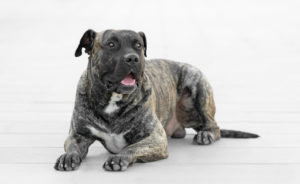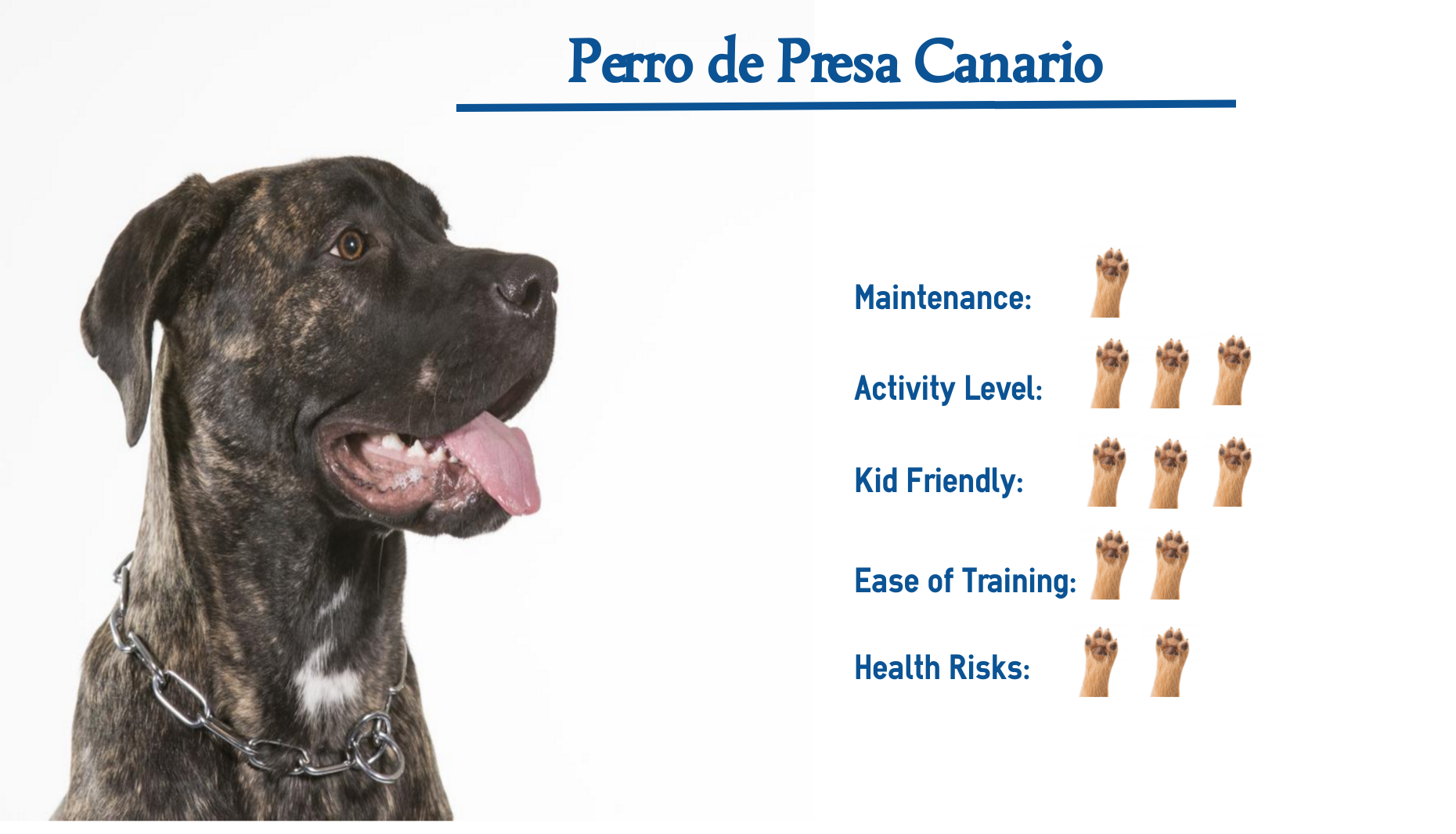The Canary Islands are a set of Spanish Islands off the coast of Africa, just to the west of Morocco and the Western Sahara. It’s here that the Perro de Presa Canario dog originates. The name may be hard to remember if you’re not a Spanish speaker, but the dog will probably look familiar.
You see…
Some people call it a Canary Mastiff for ease, which should give you some idea of what this guy will look like. It should also give you a clue as to whether or not you’ll want to own one of these guys because, let’s face it, owning a vast dog isn’t for everyone!
This is why…
We wanted to take a moment and discuss what it might be like to own one of these incredible animals so that if you’re ever allowed to make one of them your own, you’ll know for sure if it will be a good idea.
So, without further ado, let’s dive right into it!
Perro de Presa Canario Breed Fast Facts
Country of Origin: Spain (Canary Islands)
Original Purpose: Catch and Drive Cattle
Height: 20 to 26 inches at the shoulder
Weight: 80 to 115 pounds
Dog Breed Classification: Not “officially” recognized by the American Kennel Club (AKC), currently only holds Foundation Stock Service acknowledgment
Lifespan: 10 to 14 years
Origin of the Perro de Presa Canario Dog Breed
This island-born dog is a powerful dog with a muscular body used to do meaningful work around the farm. He first came into existence as early as the 15th century.
 Now…
Now…
It’s most likely a breed from breeding various Mastiffs and Bulldogs, such as Alano,s that came when the British colonized the islands. They were probably also coupled with the Bardino Majorero, which is why sometimes this dog is referred to as a Perro de Ganado Majorero.
Early on…
In the early 1900s, dogs were used in dog fighting until it became illegal in the 1940s. Though, as with most prohibitions, the practice still occurred underground for some time. The dog became less popular and almost became extinct due to the fights and the rise in popularity of other big dogs such as the German Shepherd, Great Dane, and Doberman Pinschers.
Luckily…
They did rise in popularity, and in 1982, a club for Perro de Presa Canario dogs was formed in the Canary Islands. Then in 1996, the dog joined the American Kennel Club’s Foundation Stock Service (a step toward joining the AKC officially).
This dog may also go by the name:
- Godo Canario,
- Canary Mastiff,
- Dogo Canario,
- Canary Dog,
- and Presa.
Physical Characteristics
This is a large dog. Weighing in at 80-110 pounds, it’s bigger than most children under 12 and some petite adults. This dog is well-built and robust. With a broad body and chest, this dog makes his presence felt. He can be black and tan (or other brindles), tan, or shades of grey. You may also see a few white markings on this dog.
Personality and Temperment
This dog, alert and gentle, can be an alpha dog. These characteristics make him an excellent guard dog. Now you will want to train Presa Canario puppies from early on. Like most dogs, they may have obedience issues if you don’t teach them when they are a puppy.
Also…
They will likely be hesitant around strangers, demanding to win their trust before feeling comfortable. The breed standard notes these dogs as aggressive around other animals, particularly dogs. It’s part of their territorial and “macho” nature – after all, they were bred for dog fights, so it’s probably still in their blood. Because of this, it’s probably a dog for experienced dog owners rather than a first-time dog parent.
Potential Health Concerns
Like any dog, a Perro de Presa Canario risks developing a genetic health problem or getting a disease from an unknown factor. By getting your dog from any known Presa Canario breeders, you can minimize the risk factor, but you won’t be able to wipe out the chances of something problematic completely.
Some of the common health problems you might see include:
- Hypothyroidism: When the thyroid underperforms. If a dog has this, he may have to be on medication for the rest of their life.
- Hip Dysplasia: This is a problem of the hip that can impact the way they walk. For a female dog, it could mean she cannot give birth. Surgery could be an option.
- Elbow Dysplasia: This means how the elbow bends could be problematic. Again, it will impact the dog’s walking and running. Surgery could be an option.
- Cryptorchidism: This is a testicular problem that could impact reproduction. It is not life-threatening and may not need any medical attention.
In addition to any of these genetic issues, a dog can encounter other health issues. When you purchase a puppy of any kind, you must ask yourself: What will I do if my dog needs medical attention? This is why we here at IndulgeYourPet also recommend that any new pet owner take a moment and see what it might cost for you to purchase a pet insurance policy for your new animal.
Now will a pet insurance policy be suitable for everyone?
No, probably not. But until you fully understand what these policies “will” and “won’t” cover and how much these pet insurance policies cost, how will you know if one might be right for you?
For more information on who we feel currently offers the “best” pet insurance policies out there, we would encourage you to check out our Best Pet Insurance Policies article.




Thanks for the research, describes My Dog to a T.He is the most Loyal and Smartest Dog I ever owned! At 87 lbs and an Alpha, he is so strong that I have worked with him endlessly and got so many good Results. He plays soccer, frisbee, catch, watches tv, and is Very Territorial, Great WatchDog! Playing with Grandchildren Endlessly and wears them down with his Energy! He follows me everywhere and threw Covid he kept me busy! For anyone that would want a dog like this, you would need the Time to Train, Strength, Activities, and the Calmness to Discipline which they Respond To! If You’re a Screamer,older this breed is Not for You !